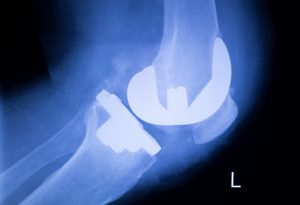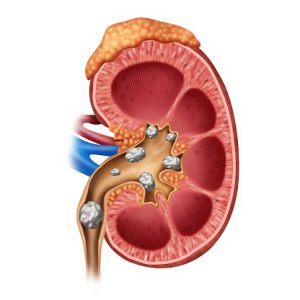If you are experiencing prolonged periods of knee pain or stiffness that makes it hard to perform simple everyday tasks, you may be a candidate for knee replacement surgery.
Knee replacement surgeries are often performed to treat patients who have suffered a serious trauma, but the most common reason for someone to need this procedure is to treat progressive osteoarthritis or other diseases that affect the knee joint. This procedure is usually a last resort and your doctor might recommend it only after all other forms of treatment or medications have proven unsuccessful.
Performed by an orthopedic surgeon, knee replacement surgery involves replacing some or all of the components of the knee joint with a synthetic implant, to repair the damaged weight-bearing surfaces that are causing pain. A total knee replacement surgery replaces all three compartments of the diseased knee joint. A partial knee replacement involves an implant in just one or two compartments of the knee, retaining any undamaged parts.
Minimally invasive surgery has revolutionized knee replacement surgery. Minimally invasive knee joint replacement requires a much smaller incision, which leads to less pain, decreased recovery time and better motion due to less scar tissue formation. The average hospital stay after knee joint replacement is usually three to five days.
Rehabilitation is almost always necessary after knee replacement surgery. The physical therapy you receive after surgery, whether in a sub-acute facility, an out-patient center, or in your home is an essential part of your healing process as proper exercise will prevent scarring, maintain muscle strength and joint stability. The frequency and duration of therapy varies from patient to patient.
Flushing Hospital’s team of highly qualified orthopedic surgeons performs over 1,500 procedures every year, including hundreds of minimally invasive knee replacement procedures. They also perform surgeries to repair hip fractures, fix broken wrists and ankles, as well as shoulder replacement surgery. For more information about the Department of Orthopedic Surgery at Flushing Hospital, or to schedule an appointment to speak with a surgeon, please call 718-670-3135.
All content of this newsletter is intended for general information purposes only and is not intended or implied to be a substitute for professional medical advice, diagnosis or treatment. Please consult a medical professional before adopting any of the suggestions on this page. You must never disregard professional medical advice or delay seeking medical treatment based upon any content of this newsletter. PROMPTLY CONSULT YOUR PHYSICIAN OR CALL 911 IF YOU BELIEVE YOU HAVE A MEDICAL EMERGENCY.




